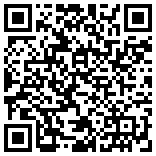 A video product you use daily to train your brain to easily recognize candlestick patterns and predict changes for trading success.
A video product you use daily to train your brain to easily recognize candlestick patterns and predict changes for trading success.
After completing the checkout process you’ll get access to the Forex Brain Trainer members area and videos which cover all the major candlestick patterns.
Play 4 different interactive games that will test how well you have trained your brain. This particular feature uses Flash technology and so unfortunately will not work on iPads or iPhones
Train Your Brain Risk Free For 60 Days – Prove To Yourself That It Works Purchase the product, use it as instructed in the ‘Read Me’ file, and if you don’t notice a shift in the way you see your charts then simply get a full refund, no questions asked. Forex Brain Trainer comes with a full customer service guarantee from ClickBank.
They will refund your money instantly if you are not 100% satisfied with your purchase at anytime within 60 days, so it’s totally risk free.
Master the basics of Bitcoin and own a stake in the future of money with this 5 star course worth $29.
Candlestick patterns were created centuries ago, around about the 18th century by Munehisa Homma. He was a rice trader on the financial markets. People began to take notice of Homma after he successfully executed over one hundred winning trades in a row thanks to candlestick patterns.
When you read the names of many of the candlestick patterns, you’ll notice a lot of military references such as ‘three white soldiers’. This is because candlestick patterns began to be developed during war years in Japan.
Another naming convention that has suck are the terms ‘white’ and ‘black’. For example ‘three white soldiers’ and ‘three black crows’.
The terms white and black refer back to the days when computer screens (and before that paper and pen) were not able to show candlestick patterns in color.
Candlestick Patterns in modern trading are widely used because of the amount of information they can display in a single bar.
They also appear much larger on a computer screen than the alternative OHLC bars, which can sometimes be difficult to read when you are zoomed out of a chart.
While they have been used for hundreds of years in Japan, it has only been over the last few decades that the western economy and the United States has made use… Read more…































































































